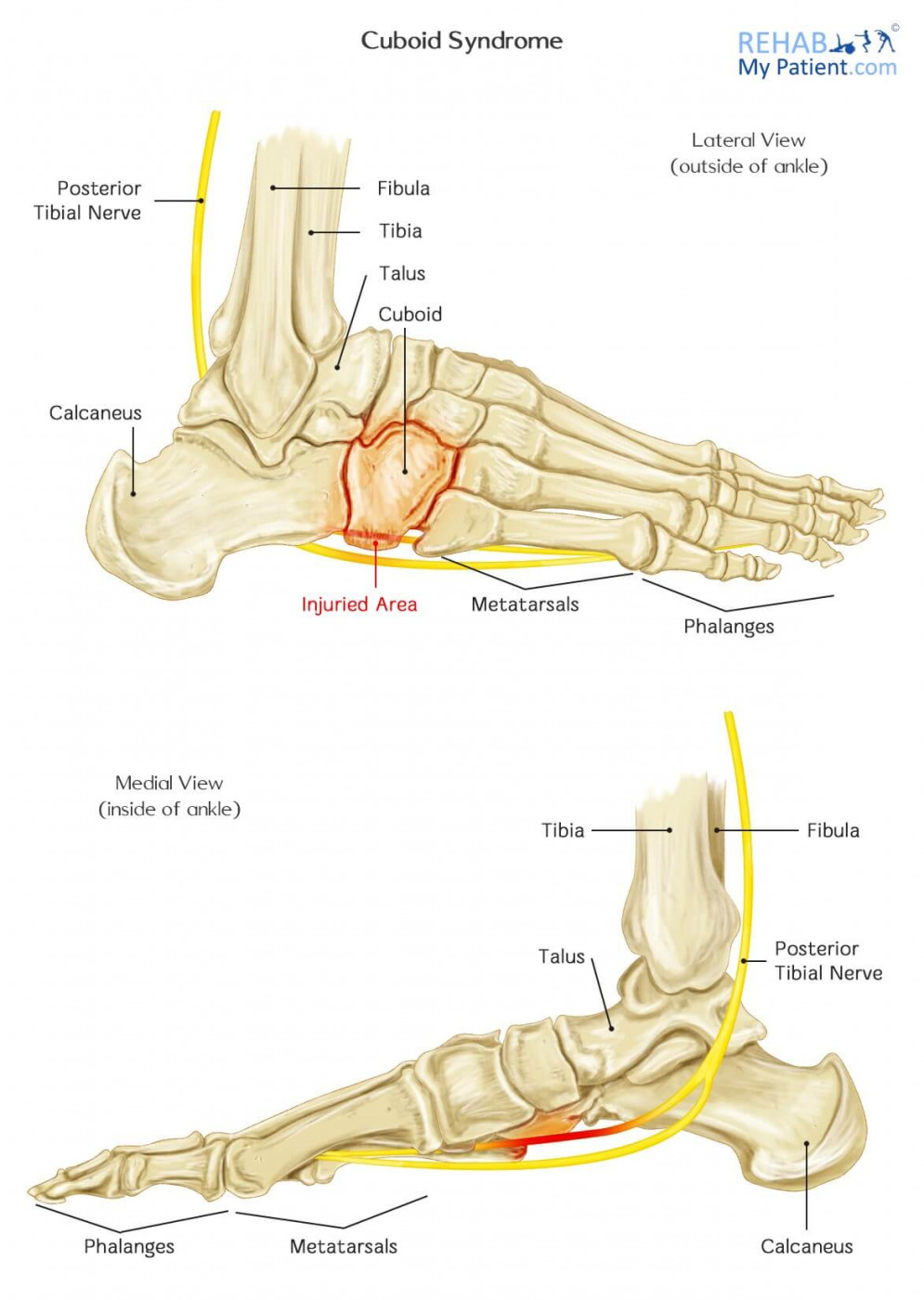
Cuboid syndrome describes a condition resulting from injury to the ligaments and joints surrounding the cuboid bone, which is one of the seven tarsal bones located in the foot. The condition is often manifested in the form of lateral pain in the foot and often general weakness in the foot. Cuboid syndrome is relatively uncommon, but also not well recognized or defined.
Cuboid Syndrome Anatomy
This syndrome is caused when the tibial nerve becomes entrapped. The tibial nerve follows along a curving route down the back-side of the leg and all the way to the ankle where it curls and turns below the interior part of the ankle.

Four compartments are in this region. Within three of those compartments, the muscles are routed from the foot to the leg. The fourth region consists of the posterior tibial vein and artery and the tibial nerve surrounded with the muscles.
On the top of the structures, the laciniate ligament lies, which is the ligament forming the root of the four main compartments. Little room for expansion occurs when one of these structures becomes enlarged or a foreign object is inserted into the region.
How to treat cuboid syndrome:
- Manual Therapy
Seeing a hands-on practitioner will be great for your feet. One of the best methods of treatment is mobilization to the foot. Often people’s feet get very stiff from years of compressive force. Mobilization can improve range of mobility in the feet joints and help alleviate cuboid syndrome. Acupuncture, ultrasound and electrotherapy and exercises can all help.
- Steroid Injections
For many individuals, steroid injections have proven to be quite effective in relieving pain and discomfort in the area. Care needs to be taken when getting the injections to make sure no injury occurs to the artery or vein. Often a local anaesthetic will also be used to give pain relief for a period of up to two weeks. If the nerve inflammation is causing compression in the foot, you can help to relieve it with an anti-inflammatory medication. Due to the side effects from the medication, they should be taken with care and only as directed.
- Arch Supports
Wider shoes and arch supports have proven to be successful in relieving the discomfort of cuboid syndrome. If the problem is the direct result of flat feet, customized orthotics can help to restore the natural arch in the foot.
- Surgery
If other methods of treatment are not successful, surgery for treating the condition might be required. In this procedure, the doctor will make an incision below and behind the inside of your ankle for the surgeon to cut the laciniate ligament, which provides room for the nerve to expand. If a cyst is impinging the nerve, it can be removed at that time. The procedure will provide enough room to prevent the nerve from becoming compressed again.
Tips:
- Most of the time, the condition is found in active adults, but it can happen in children as well.
- When the tibial nerve becomes compressed, it can create a burning sensation and tingling.
- Compression is often caused from a nearby muscle growing too large for the space and scar tissue forming.
- For those who have flat feet, the syndrome is more prevalent because of the additional strain placed on the nerves and muscles surrounding the foot and ankle.
- A fracture or other trauma to the ankle is another cause of the condition in individuals.
Sign Up
Sign up for your free trial now!
Get started with Rehab My Patient today and revolutionize your exercise prescription process for effective rehabilitation.
Start Your 14-Day Free Trial